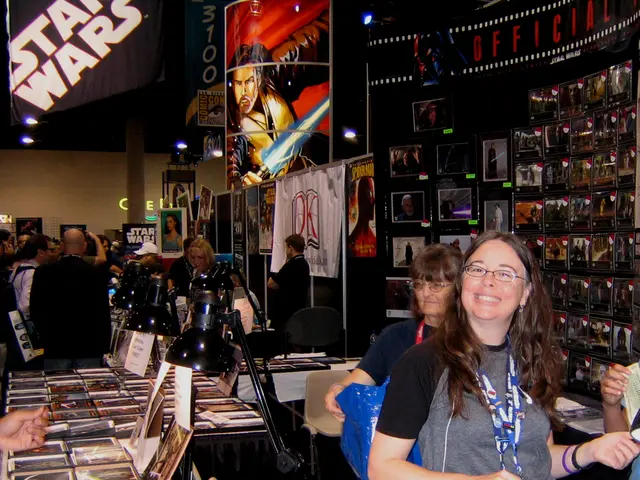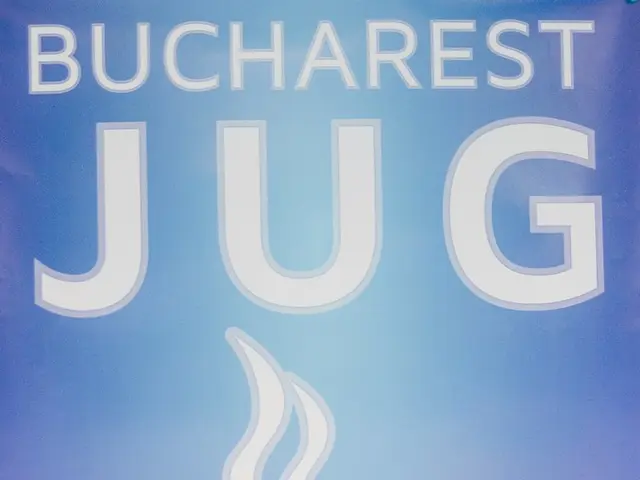Digital avatars dominating online space - and the corporation wagering heavily on them
Headline: Hololive Drives the Growth and Cultural Impact of the VTuber Industry
The VTuber industry is experiencing a period of steady maturation and global expansion, with significant market growth expected through the late 2020s. One of the leading agencies in this burgeoning field is Hololive Production, which continues to strengthen its influence and expand internationally.
Current State of the VTuber Market
The VTuber market has seen record viewer engagement, with over 500 million hours watched per quarter. However, Q2 2025 witnessed a slight slowdown in VTuber creator growth, reflecting market maturation rather than decline. Twitch hosts over 60% of active VTuber channels, while YouTube captures more than 64% of total watch time, showcasing audience and platform diversification.
Hololive maintains a dominant position with a robust roster of talent based primarily in Japan, enabling seamless collaborations, high-quality 3D content, and music productions. Despite some contract terminations and departures of prominent figures, Hololive remains influential, with its members forming the core of Japanese VTuber culture.
Market Growth and Technology Trends
The global VTuber market, valued at around USD 4.4 billion in 2022, is projected to exceed USD 27.5 billion by 2029, growing at an approximate CAGR of 35%. This growth is fueled by advances in motion capture, animation, AI, and machine learning technologies, which enhance avatar realism and interactivity. The US, alongside Japan, is a significant growth market, supported by virtual streaming technology innovations and interactive audience engagement models.
Collaborations with mainstream brands, celebrities, and cross-media appearances have expanded VTubers' cultural reach and monetization, enhancing their role in entertainment and marketing ecosystems.
Hololive’s Cultural Impact and Future Outlook
Hololive's strategic international expansion, particularly its US branch, is facilitating mainstream brand partnerships and cultural crossover beyond Japan, solidifying its place in global popular culture. The agency's efforts in maintaining high production standards and leveraging emerging tech ensure it stays at the forefront of VTuber innovation and entertainment trends.
The rise of independent VTubers alongside agency talents suggests a diversifying ecosystem, which may foster broader creative expression and niche audiences, enriching popular culture further. Market analyses predict continued rapid industry growth, with VTubers increasingly integrated into advertising, music, and virtual events, heralding their sustained cultural significance and commercial viability well into the 2030s.
Hololive is bringing its star talent to the stage at Radio City Music Hall later this month. The agency offers its performers access to COVER's software, agents, music producers, and event organizers for business support. When a VTuber joins Hololive, they become subject to corporate management, including revenue sharing, collaboration decisions, and character ownership.
The process of becoming a corporate VTuber with Hololive requires a grueling, potentially years-long process. Gawr Gura, the most subscribed VTuber on YouTube, graduated from Hololive in April and launched her new character, Sameko Saba, to 200,000 live viewers. When a VTuber leaves an agency, it's referred to as "graduating." Hololive has had seven of its talents graduate, with the most famous being Gawr Gura.
Tanigo, the CEO of Hololive, predicts that in the next five to 10 years, major artists will emerge from the VTubing world, not just in Japan, but also in other countries. The rise of VTubers has broken Twitch subscriber records and pulls in hundreds of thousands of viewers weekly. However, challenges remain, as seen with the recent shutdown of VShojo, the third most popular VTubing agency, after burning through $11 million in funding without recouping it.
The process and a lot of VTubing culture take inspiration from Asian idol culture. Tanigo disagrees with the idol comparison, emphasizing the individual personalities of Hololive VTubers. Hololive talents have over 80 million subscribers between them. The agency is testing Holoearth, a new virtual space that aims to deliver on metaverse promises, allowing players to meet their favorite VTubers, take pictures, and wear merchandise.
In Japan, Hololive performers can use motion capture studios to stream or create content as their character. Some creators have to audition four or five times before even getting a callback. Despite the challenges, the allure of VTubing remains strong, with the potential for major artists to emerge from this innovative and rapidly growing industry.
- The VTuber market, propelled by advancements in technology such as motion capture, AI, and machine learning, is projected to surpass USD 27.5 billion by 2029, with a significant presence on digital platforms like YouTube and Twitch.
- Hololive Production, a Japanese agency at the forefront of the VTuber industry, continues to leverage tech trends to maintain high production standards and remained influential even amidst contract terminations and departures of prominent figures.
- The US, fueled by virtual streaming technology innovations and interactive audience engagement models, is positioned as a key growth market in the global VTuber scene, alongside Japan.
- In the entertainment and marketing ecosystems, collaborations with mainstream brands, celebrities, and cross-media appearances have expanded VTubers' cultural reach, monetization, and their role as digital influencers.
- As the VTuber industry matures and diversifies, market analyses predict continued rapid growth, with major artists likely to emerge from this exciting and rapidly evolving tech-driven sector, transforming the landscape of digital entertainment and lifestyle.




